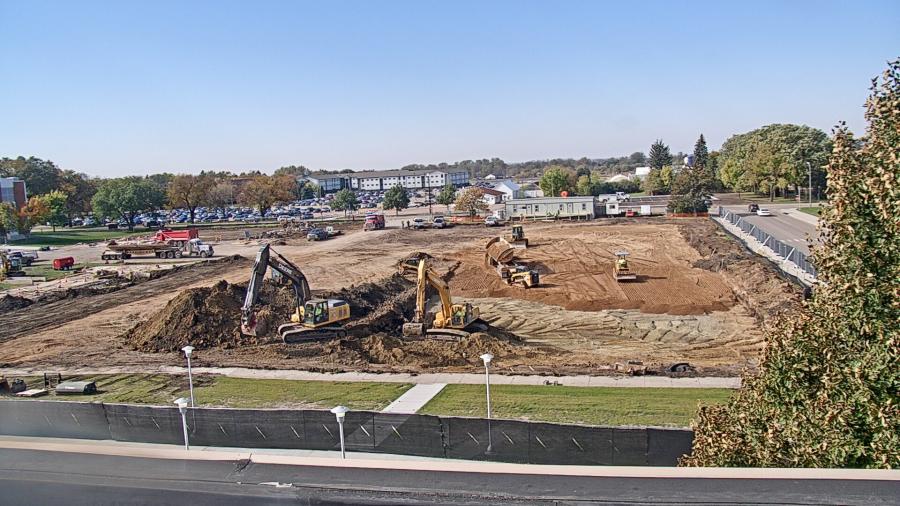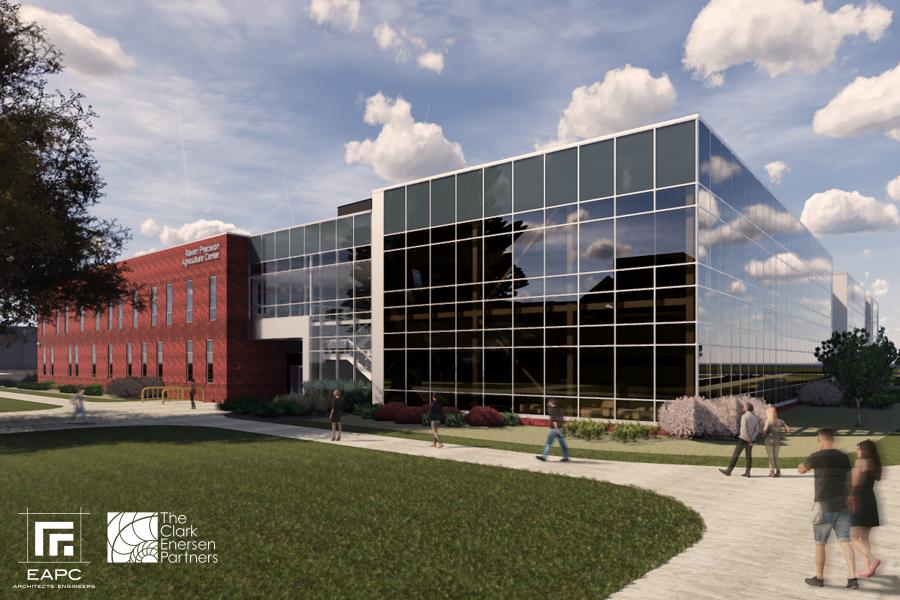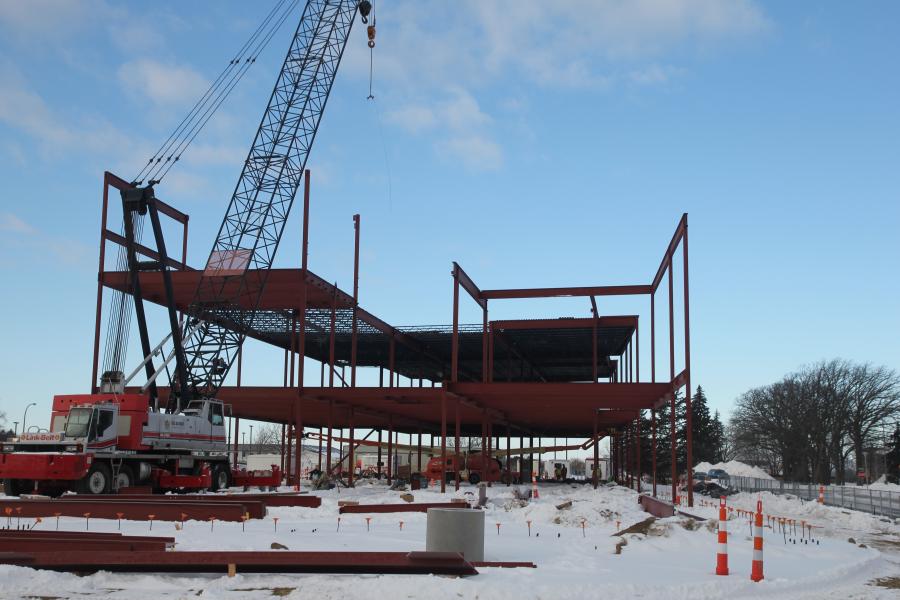Crews perform site work for the new Raven Precision Agriculture Center on the SDSU Campus.
(McCownGordon photo)
Designed to combine agronomy, engineering and computer science disciplines under one roof, South Dakota State University's $46.1 million Raven Precision Agriculture Center will be dedicated to precision agriculture education, research and extension when it opens next year. Located on the school's main campus in Brookings, the facility is funded by a combination of state money and support from donors and friends through private and corporate philanthropic development.
"South Dakota State University recognized the need for a precision agriculture degree program and created the first four-year degree in precision agriculture in the United States in 2016," said John Killefer, the school's dean of agriculture, food and environmental sciences. "In order to facilitate and complement this new program, the Raven Precision Agriculture Center will help to support this integrative teaching and research program.
"With the rapid growth in student interest in the major, and the very rapid implementation and development of precision agriculture technologies in the field, the Raven Precision Agriculture Center will allow us to be at the forefront of this discipline that will allow us to not only create new technologies, but also develop the future leaders of precision agriculture."
The new building will serve as a space where students and faculty can join forces and conduct research. Those trained in the new building will be uniquely qualified as they enter the agriculture industry, according to Killefer, who said there's a great deal of interest in the field.
"We currently have 95 students majoring in this new program, and we are anticipating a steady state of growth, possibly as many as 200 undergraduate and graduate students. The facility also offers space for industry partners in order to foster an atmosphere of collaboration."
As for the features offered, said Killefer, "The facility was designed to incorporate many collaborative spaces for both students and faculty. There are uniquely designed classroom spaces that encourage hands-on learning with precision agriculture technologies and equipment. The high bay space will allow us to bring full-sized equipment inside the building for student engagement."
South Dakota State University is the first land-grant university to offer both a major and a minor in precision agriculture. Killefer explained that the facility will lead to the development of new technologies and industry partnerships that will resonate in the agricultural industry for generations to come, by shaping the leaders of tomorrow.
It also will promote innovation.
"We are very excited and enthusiastic about the opportunities that the new facility will present for our students and stakeholders. Precision agriculture adoption will enhance environmental sustainability on South Dakota's farms and ranches."
Colin Gaalswyk, senior mechanical engineer, facilities and services, noted that coordination and communication are continuing challenges on a construction project of this nature.
"It's needed at all levels of the project team, including the owner, architect and engineer, construction manager at risk and the subcontractors, to ensure that expectations on quality and schedule are being met. This is accomplished through daily huddle meetings with the trades, weekly trade coordination meetings and biweekly owner meetings."
Site work began in September 2019. The property included two 60-year-old ag research support facilities and a parking lot for adjacent facilities. Construction called for demolition of the two facilities and removal of the parking lot.
"The site required removal of 4 ft. of top soil materials to reach suitable bearing soils," said Gaalswyk. "These soils were taken off site or stockpiled. Granular engineered fill was used to bring the site back up to grade. Variations were as expected based on soil boring tests."
Site utility installations have included an electrical duct bank for medium voltage loop; reinforced concrete pipe for storm sewer; sanitary sewer branch line; and domestic water service line. Under a separate project, a steam utility tunnel was completed adjacent to the site. It serves existing academic and research facilities. Design coordination was possible to ensure that the tunnel could be connected to the new building.
Dirt/material removal included 290 cu. yds. The north side of the building site was raised by 5 ft. from the existing grade.
Work includes footings and foundation installation, erection of steel structure and installation of subgrade sanitary lines. Significant milestones on the project include completion of the structure, enclosure of the building and the finishing off of spaces within the building.
The project is a typical two-story steel structure. High bay spaces are constructed using precast walls. The second floor is concrete on metal decking. Exterior finishes include brick, aluminum glazed curtain walls and metal panels. Durable finishes are throughout the interior. Primary equipment being used by crews to complete the structure includes a crane and man lifts.
Building the agriculture learning center differs from other projects, as far as the classrooms needed, and preparation required for farming equipment that will have to be put in place.
"The facility will house academic and research space for both the Department of Ag and Biosystems Engineering and the Department of Agronomy, Horticulture and Plant Science," said Gaalswyk. "The facility will provide specialized experimental learning and research environment necessary for the multidisciplinary major in precision agriculture. The goal is to develop a workforce of agronomists and engineers who can apply complex data analytics that will aid in the development of the hardware, software and tools necessary to produce more food with less water, fertilizer and treatments."
Gaalswyk added that the most time-consuming part of the work involves coordination and review of the contractors work as it pertains to the owner's requirements related to facility operations and the occupant's academic and research program requirements.
McCownGordon is the construction manager at risk for the project. EAPC serves as the architect of record. CEG
Today's top stories





















